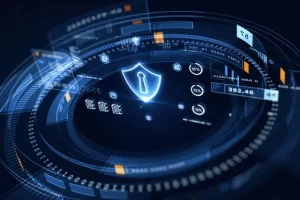Future of Cybersecurity
- Posted by 3.0 University
- Categories Cyber Security
- Date July 10, 2024
- Comments 0 comment
Future of Cybersecurity Careers: Future Trends and Growth
Imagine a world where automation powers every digital interaction, from email sending to encryption.
The security of sensitive data in the cloud is constantly under threat.
In the rapidly evolving world of technologies, avoiding cybercriminals is an endless, high-pressure game that requires unstinted dedication and careful observation.
Predicting cybersecurity is a real challenge.
Things are always changing, aren’t they?
Time shifts between attacks and tactics and the latest tech and defences.
Anyway, our cybersecurity experts have come up with their top predictions for the years to come.
Let’s make sure we’re prepared and ready to prevent any issues.
Prevention and preparation are of paramount importance now and in the next ten to fifteen years.
In 2023, cyber professionals began to understand the essence of having the proper measures to prevent incidents and data breaches as opposed to dealing with them whenever they occur.
It’s going to mean more money going into our personnel at all levels of training and education, don’t you think?
We will have to become incident-ready and prepared with response training playbooks to enable us to stay ahead of new hypes and developments in threats and attacks.
One of the most demanded training programmes for employees on the job was to always stay in compliance with the current regulations.
Privacy & Security
With regulations coming into play, we’ll have to pay extra attention to privacy and security issues.
Apart from the GDPR, PIPEDA, and CCPA, quite a number of regulations at the state and regional level are developing.
Moreover, a thorough inspection of cybersecurity controls is necessary to ensure that the impacted businesses or organizations bear the brunt.
That’s why 100% compliance is the main priority of companies dealing with customer personal details.
Ensuring that our cybersecurity efforts match the existing and predicted regulations is a top priority that remains ongoing.
Cyber Insurance
This trend has greatly aided the need for thorough assessments of security systems in the context of cyber insurance.
Given the lack of comprehensive information and the constant evolution of cyberattacks, the cyber insurance market faces significant challenges.
It is extremely challenging to determine which risk is based on the level of knowledge the toxins possess about cyberattacks.
To help alleviate this issue, we expect that cyber insurance companies will start incorporating or encouraging cybersecurity assessments as a requirement for underwriting or policy terms.
Cyber Value-at-Risk
Cyber Value-at-Risk (CVaR) assesses the impact of cyber threats and evaluates the effectiveness of risk management (World Economic Forum and Deloitte, 2015).
An analysis is conducted on residual risk within organizations, damages in cyberspace, and methods of risk control.
Understanding the potential dangers can assist companies in minimizing the chances of a cyber-attack or enhancing their ability to handle any resulting damage.
Having a good grasp of information is crucial for effective risk supervision and leadership.
It enables you to develop strategies to handle challenges and determine your risk tolerance.
In the realm of cyber-security, this knowledge is essential for understanding the remaining risks after implementing control measures and adapting to an ever-evolving threat landscape (Ipsos MORI, 2020).
Cyber-risk insurers also value the precision of CVaR.
Cyber policy underwriters carefully analyse the security measures of organizations, while property insurance underwriters focus solely on evaluating coverage.
This distinction is highlighted by EIOPA (2018) and Nurse et al. (2020).
Cyber insurance premiums are determined by the effectiveness of risk control measures.
Insights from CVaR can have an impact on how premiums are calculated, taking into account factors such as organizational risk management, residual risk, and losses from cyber-attacks.
Professionals and specialists often fail to provide risk controls with a logical reasoning framework, accreditation, or quantification of their benefits.
Quantifying the value or variability of risk-control standard compliance is a challenging task that lacks scientific, clear, or verifiable methods.
Defining an organization’s CVaR can be quite complex due to the various cyber risk factors involved.
CVaR models are determined by factors such as organizational assets, the threat environment, risk controls, and impacts.
It can be challenging to determine how risk controls effectively mitigate cyber risk and reduce the likelihood and severity of threats.
Accurately determining the potential losses associated with risk measures necessitates dependable and confirmable methods.
Companies have expanded their use of VaR models beyond the digital realm (Hendricks, 1997).
The WEF has provided valuable insights on the development of CVaR models (World Economic Forum and Deloitte, 2015), but they have not yet released a fully developed model or any outcomes.
The CVaR model is the key contribution of this article, which greatly enhances the reasoning process.
This could be useful for insurers to evaluate customer risk and premiums, as well as offer cybersecurity advice.
These evaluations can help determine if a client’s cyber insurance policy is in compliance or potentially lower their rates by showing their commitment to security maturity and best practices.
Cloud Services: A Growing Priority
Cloud services are becoming more popular among companies. More and more people are gradually adopting cloud technologies. Its services are used to send emails, share files, and store data.
Nevertheless, cloud-based collaboration and customer relationship management are the fastest-ascending ones at present.
These services come with the promise of an ideal blend of security and productivity.
You can, of course, enhance the security by adding some more layers, but very few companies can dedicate their time and effort to getting them implemented.
The type of service and the person responsible for its management and cybersecurity significantly influence it.
The companies that utilize these services may not get the instructions, and thus they may keep themselves unprotected from safety issues and the like.
Summing it up….
Cybersecurity is an area that moves swiftly.
The field is always in demand. The demand for well-qualified workers is growing naturally. Cyber threats are things that we cannot even picture, and they get more difficult day by day.
The growth of the space is intermittently wrought with incidences like the ransomware attacks on significant businesses and the ongoing need for continuous learning and certification, which is also among the difficult parts.
This also cites the significance of continuous education, the rise of AI-driven social engineering, the critical need for third-party security services, and the future of cybersecurity regulations and insurance.
As cloud services gain prominence, understanding and managing cybersecurity responsibilities becomes crucial.
Stay informed and prepared to navigate the intricate future of cybersecurity.
While the real-time and highly variable nature of cyber insecurity greatly impact quality information, the need for a skilled workforce, lifelong learning, and solid regulations continues to stand out.
From the era of AI-driven security threats to the importance of cloud security, strong readiness and vigilance are required on our part as a whole.
In these efforts, we can practically involve ourselves by launching anticipatory tasks and handling the heritage of innovative technology.
Consistently acquiring knowledge from the development of technologies, management, and other professionals can significantly enhance our understanding of these concepts and ensure that these technologies do not pose a threat to our security and privacy.
If you’re looking for an AI certification course or a cybersecurity online certification course, register now at 3.0 University.
You may also like

Firewalls & Future of Cybersecurity Careers in 2025


